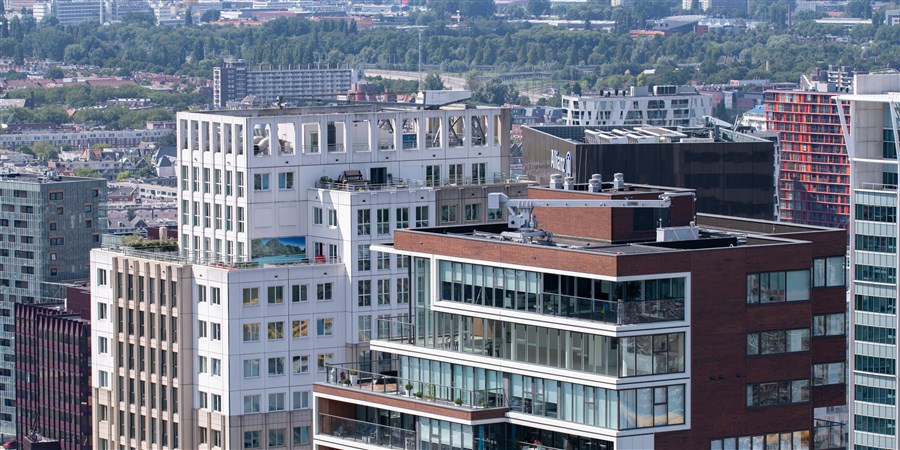Balance Between Supply and Demand of Social Housing in Dutch Cities
Introduction
Social housing has long been a crucial element in addressing housing affordability and social equity issues. In the second half of the 1990s, Dutch urban housing policy underwent a significant shift from urban renewal to urban restructuring, with a focus on creating more socially mixed neighborhoods. This transformation was driven by ongoing debates on concentration, segregation, and social mix. The primary instruments of urban restructuring included the demolition of social housing and the construction of more expensive rental and owner-occupied housing. However, this shift raised concerns about the potential shortage of social rented dwellings for low-income households, who are the primary beneficiaries of social housing. This paper explores whether the dwindling supply of social housing still meets the potential demand in the target group by analyzing three Dutch cities: Rotterdam, The Hague, and Breda.

The Shift in Dutch Urban Housing Policy
In the mid-1990s, Dutch urban housing policy pivoted from urban renewal to urban restructuring, aiming to create more socially mixed neighborhoods. This shift was motivated by debates on concentration, segregation, and social mix. The policy change led to the demolition of social housing and the construction of more expensive rental and owner-occupied housing. While this restructuring brought about substantial changes, it also raised concerns about the potential shortage of social rented dwellings for low-income households.
The Role of Social Housing
Social housing plays a vital role in providing affordable housing to low-income households. In the Netherlands, social housing units rented for an average of €561 per month in 2022. These units are managed by independent, nonprofit housing associations known as woningcorporaties, which own nearly 30 percent of the country’s housing stock. These associations operate without direct subsidies from the government, sustaining their operations through revolving funds of rental income. New social housing construction is funded with excess rental revenue, long-term loans, and equity from unit sales.
The Impact of Urban Restructuring on Social Housing
Urban restructuring has had varying impacts on social housing in different Dutch cities. In Rotterdam, which had a large social housing stock at the beginning of the restructuring, there are still sufficient affordable homes for lower-income households. However, in The Hague and Breda, restructuring has tightened the supply of social rental housing. The municipal authority in The Hague has attempted to remedy the situation by entering regional agreements to secure sufficient levels of affordable housing.
Case Study: Rotterdam
Rotterdam’s experience with urban restructuring highlights the importance of maintaining a sufficient supply of social housing. Despite substantial demolition and restructuring, the city has managed to preserve enough affordable homes for lower-income households. This success can be attributed to careful planning and the involvement of housing associations in the restructuring process.
Case Study: The Hague
The Hague faced a more challenging situation due to the tightening supply of social rental housing. To address this issue, the municipal authority entered into regional agreements to secure sufficient levels of affordable housing. These agreements underscore the importance of collaborative efforts in maintaining social housing availability.
Case Study: Breda
Breda, a city in the Netherlands, has faced significant challenges in maintaining its supply of social rental housing due to urban restructuring initiatives. As part of the broader shift in Dutch urban housing policy from urban renewal to urban restructuring, Breda has seen the demolition of existing social housing units and the construction of more expensive rental and owner-occupied housing. This transformation, while aimed at creating more socially mixed neighborhoods, has led to a tightening supply of affordable housing options for low-income households.
The situation in Breda underscores the critical need for proactive measures to ensure that social housing remains accessible to those who need it most. The city’s experience highlights the importance of careful planning and strategic interventions to mitigate the potential negative impacts of urban restructuring on housing affordability. Local authorities and housing associations must work together to develop and implement policies that balance the goals of urban restructuring with the need to preserve and expand social housing options.
One potential approach is to establish regional agreements, similar to those implemented in The Hague, to secure sufficient levels of affordable housing. These agreements can involve collaboration between municipalities, housing associations, and private developers to ensure that new housing developments include a proportion of social housing units. Additionally, innovative financing models and the use of public land for social housing projects can help address the supply shortage.
Ultimately, the case of Breda serves as a cautionary example of the unintended consequences of urban restructuring. It emphasizes the need for a balanced approach that considers both the social and economic dimensions of housing policy. By taking proactive steps to preserve and expand social housing, cities like Breda can ensure that their most vulnerable residents continue to have access to safe, affordable, and stable housing options.
Conclusion
The shift in Dutch urban housing policy from urban renewal to urban restructuring has brought about significant changes in the social housing landscape. While some cities like Rotterdam have managed to maintain sufficient affordable housing, others like The Hague and Breda have faced challenges. The experiences of these cities underscore the importance of careful planning, collaboration, and the involvement of housing associations in ensuring that social housing continues to meet the needs of low-income households.
